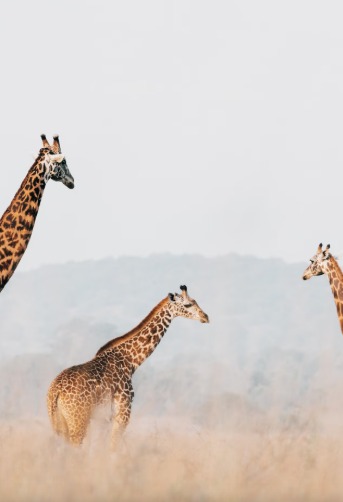Mist clings to the Mutumba Hills as lakes and rivers wind through sprawling, acacia-dotted savannahs. In Akagera National Park, a natural refuge in northeastern Rwanda where wilderness meets resilience, adventure awaits around every corner.
Established in 1934, Akagera was nearly devastated by Rwanda’s civil war in the 1990s. Displaced populations and poaching drastically reduced wildlife populations. In 2010, a transformative partnership between the non-profit African Parks and the Rwandan Development Board (RDB) gave Akagera another chance.
In the 15 years since, Akagera’s ecosystems and wildlife have not just recovered—they’re thriving. White rhinos, lions, elephants, and giraffes now roam the revitalized plains. Following the successful translocation of 30 white rhinos from South Africa in 2021, another 70 rhinos were relocated in June 2025. Rangers are carefully monitoring these animals as they integrate into the park.
The park’s infrastructure has also evolved. The renovation of Karenge Bush Camp and the late-2025 opening of Wilderness Magashi Peninsula, a high-end safari camp, provide comfortable accommodation while preserving Akagera’s authentic wilderness. Visitors can enjoy pristine landscapes without the crowds found in neighboring safari destinations.
What to Do
Covering 433 square miles, Akagera is an adventurer’s paradise. The Big Five roam their grasslands, wetlands, woodlands, and lakes alongside impala, zebras, and waterbucks. Birdwatchers will delight in around 500 species.
- Game Drives: Take day or night drives across rolling hills and forested terrain. Wildlife is most active at sunrise and sunset. Guests can hire rangers for guided tours, with some lodges offering included drives. Night drives reveal leopards, hyenas, bush babies, mongooses, and other nocturnal species.
- Boat Safaris: One-third of Akagera is water, with lakes, rivers, and swamps. Explore Lake Ihema or Lake Rwanyakazinga by boat to spot crocodiles, hippos, and birds such as ibis, shoebill storks, and malachite kingfishers.
- Hot Air Balloon Rides: Launched in 2022 by Royal Balloons, these tours soar up to 3,200 feet for aerial views of zebras and giraffes. Bush breakfasts at sunrise complete the experience.
- Walking Safaris: Guided by rangers, walking safaris offer a close-up experience of the bush. Guests can learn to track wildlife through footprints and droppings. Karenge Camp now offers morning rhino treks as part of wildlife monitoring efforts.
When to Go
Temperatures in Akagera are moderate year-round, ranging from 72–81°F during the day and dropping to the low 60s at night. Avoid the wet months of March–May and November–December, when roads are challenging and wildlife is harder to spot. The best times to visit are June–September and January–February during Rwanda’s dry seasons.
Where to Eat
Dining depends on your accommodation. High-end camps offer full board with seasonal, chef-prepared meals inspired by local flavors. Budget options like Rhino Lodge provide basic, non-inclusive menus. Cafés at the park headquarters and Mihindi Camp serve snacks and coffee.
Where to Stay
- Karenge Bush Camp: Renovated in May 2025, this camp features seven canvas tents with ensuite bathrooms and showers. Guests enjoy an outdoor fire pit, dining tent, and optional community-led game and night drives.




